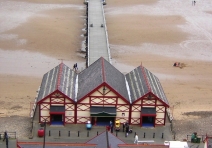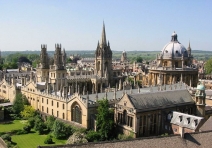WORLD TRAVEL NEWS ARTICLE

THE UNITED KINGDOM
THE UNITED KINGDOM
'NORTH EAST ENGLAND'S INDUSTRIAL HERITAGE'
Tour-smart looks at the enormous influence that North East England's industrial heritage has had on the world, and where examples of it can still be seen for today's visitors to this fascinating region.
Inventors
One of North East England's greatest inventors and industrialists, Charles Parsons, invented the steam turbine technology still used today in most of the world’s power stations. Visitors to Newcastle's Discovery Museum can learn more about another of Parson’s inventions, the fastest ship in the world and the first to be powered by steam turbine. Visit www.twmuseums.org.uk/discovery/ for more information.
Discovery Museum
Joseph Swan, a Gateshead physicist and chemist invented the first electric light bulb and his Gateshead home was the first house in the world to be wired for domestic lighting. Swann’s first public demonstration of the incandescent lamp was held at the Literary and Philosophical Society of Newcastle in 1879. Today, the society has the largest independent library outside London, housing over 150,000 books. Past and present members include Lord Armstrong, former Prime Minister Charles, 2nd Early Grey and more recently Neil Tennant of the Pet Shop Boys. Located close to the Central Station, visitors are welcome at the Library. To find out more visit www.litandphil.org.uk/html_pages/LP_home.html
In 1821 George Stephenson was appointed engineer for the construction of the Stockton and Darlington railway. It opened in 1825 and was the first public railway. George Stephenson’s birthplace was a cottage near Wylam, now a National Trust property. The distinctive brick train at Darlington and Locomotion and the National Railway Museum at Sedgefield both reflect the region’s railway history but perhaps the best way to experience Stephenson’s legacy is by journeying on the East Coast railway from Darlington along the breathtaking coastal route to Berwick, England's northern-most town. The route runs over the Royal Border Bridge in Berwick, built by George’s son Robert some 160 years ago. For more information please visit www.nrm.org.uk/NRM/PlanaVisit/VisitShildon
Architecture
Grainger Town is the historic heart of Newcastle, based on the classical streets built by Richard Grainger in the 19th century. Over 40% of the buildings in the area are listed as being of historical and architectural importance. Among the many highlights are Grey Street – voted the best street in Britain by BBC Radio 4, Grainger Street, Clayton Street and the recently renovated Grainger Market which includes the ‘Marks and Spencer Original Penny Bazaar’, the world's smallest Marks and Spencer store.
Steel and Mining
At the start of the 20th Century, Middlesbrough produced one third of the nation’s steel. Middlesbrough firm Dorman Long put that steel to good use building bridges across the world. It’s a matter of local pride that the firm’s most famous creations include not only the Sydney Harbour Bridge but also the iconic Tyne Bridge in nearby Newcastle. Dorman Long also built the distinctive Newport Lifting Bridge in Middlesbrough.
It’s a tradition that still lives on today, the iconic Angel of the North statue was built in nearby Hartlepool, before making the short journey up the road to Gateshead.
Transporter Bridge – The Newport Bridge isn’t even ‘Boro’s’ most famous river crossing, that privilege belongs to the Transporter Bridge. The bridge is actually a gondola that is suspended by steel cables 160ft above the river Tees.
The Transporter Bridge
The phrase ‘coals to Newcastle’ once summed up the region’s reputation for mining but today the region imports coal. However, the mining heritage has been preserved in a number of stunning museums that bring that heritage to life. Woodhorn in Northumberland, Killhope – The North of England Lead Mining museum (recently named North East England’s best small visitor attraction) and Beamish Museum: The Living Museum of the North which will open a coal fired fish and chip shop as its newest visitor exhibit in 2011.
Killhope Mining Museum
The industry also inspired Lee Hall of Billy Elliot Fame to write the ‘Pitman Painters’, now performing on Broadway but first produced for the Live Theatre on Newcastle’s quayside.
For further information on the North East region of England visit www.visitnortheastengland.com
You may also like to read

UNITED KINGDOM - JET BLACK & BEAUTIFUL
Tour-smart's Editor takes us to the 'Dark Side' and finds it shiny and lustrous.

UNITED KINGDOM - THE DREAMING SPIRES OF OXFORD
Tour-smart shows you the delights of taking a weekend break amongst the dreaming spires of Oxford.

Comments